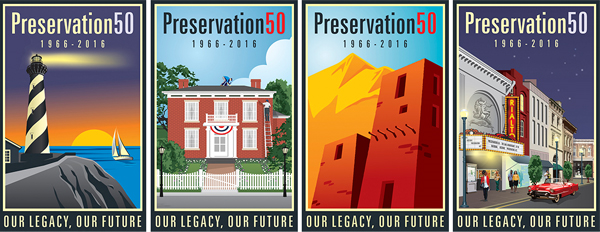What is a Historic District?
Areas containing a group of historic structures or sites that have association with one another, either on the basis of style, use or age or with an association to a particular function.
Oshkosh currently has 7 districts with over 400 properties contributing within them as well as over 25 individual sites.
Why Historic Districts Matter?
Honors the properties by recognizing their importance to the Oshkosh community.
Historic districts can be centers of heritage tourism helping to spur economic vitality.
Historic districts have shown to hold and raise property values.
Serve as educational tools and inspiration to property owners.
A method of protecting the community’s history-Federally funded and permitted projects, as well as some state involved projects, account for and involve listed properties early in the planning stages.
Property owners may be able to obtain tax credits for rehabilitation and other provisions.
The National Historic Preservation Act
Read the full text of The National Historic Preservation Act.
America’s relationship with its past changed fundamentally when President Lyndon Johnson signed the National Historic Preservation Act (NHPA) into law and formally recognized historic preservation as an important policy of the United States. These sentiments still inspire:
The Congress finds and declares that (a) the spirit and direction of the Nation are founded upon and reflected in its historic heritage; (b) the historical and cultural foundations of the Nation should be preserved as a living part of our community life and development in order to give a sense of orientation to the American people…
The American people took those words to heart in the last half-century, transforming their communities from coast to coast through historic preservation and generated widespread social and economic impacts. The NHPA established the legal framework and incentives to preserve historic buildings, landscapes, and archaeology. These heritage resources shape our sense of place, anchor economic revitalization, and ensure a more sustainable future for our nation.
The National Trust for Historic Preservation identifies 15 million active local preservationists and 50 million more individuals sympathetic to the cause of saving places that matter. Today the National Register of Historic Places includes more than 1.7 million resources in more than 89,000 listings. Historic districts large and small, urban and rural, provide dynamic places for people to live and work. Millions of visitors from around the world visit and enjoy places like Frank Lloyd Wright’s Fallingwater, the French Quarter of New Orleans, Buffalo’s Olmsted park system, prehistoric effigy mounds in Iowa, the Spanish missions of California, Seattle’s Pike Place Market, the Pueblo of Taos, New Mexico, Martin Luther King, Jr.’s church in Atlanta, and the Iolani Palace in Honolulu.
The NHPA helps stabilize neighborhoods and downtowns, contributes to public education, attracts investment, creates jobs, generates tax revenues, supports small business and affordable housing, and powers America’s heritage tourism industry. Publicly owned historic properties, from community landmarks to federal facilities and national parks, also maintain community pride and identity, aid local and regional economies through their operation and maintenance, and foster a variety of public uses.
Federal historic rehabilitation tax credits have helped create 2.3 million jobs, saved 38,700 historic structures, and attracted $106 billion in private investments. Compliance with federal requirements has engaged local communities across the country in better planning for development. Grants from the Historic Preservation Fund have supported restoration of historic treasures, assisted with community recovery from disasters, and improved education history.
National Historic Preservation Act 50th Birthday
The City of Oshkosh celebrated the National Historic Preservation Act's 50th birthday in 2016.
The NHPA is a cornerstone of American historic preservation. It was created in the belief that too many important historic places were being lost to post-World War II development and construction, and that the federal government could (and should) play an important role in protecting places that embody the United States' cultural heritage.
To mark this important milestone, we encourage you to get and/or stay involved in historic preservation activities in Oshkosh, the state of Wisconsin and the United States!
